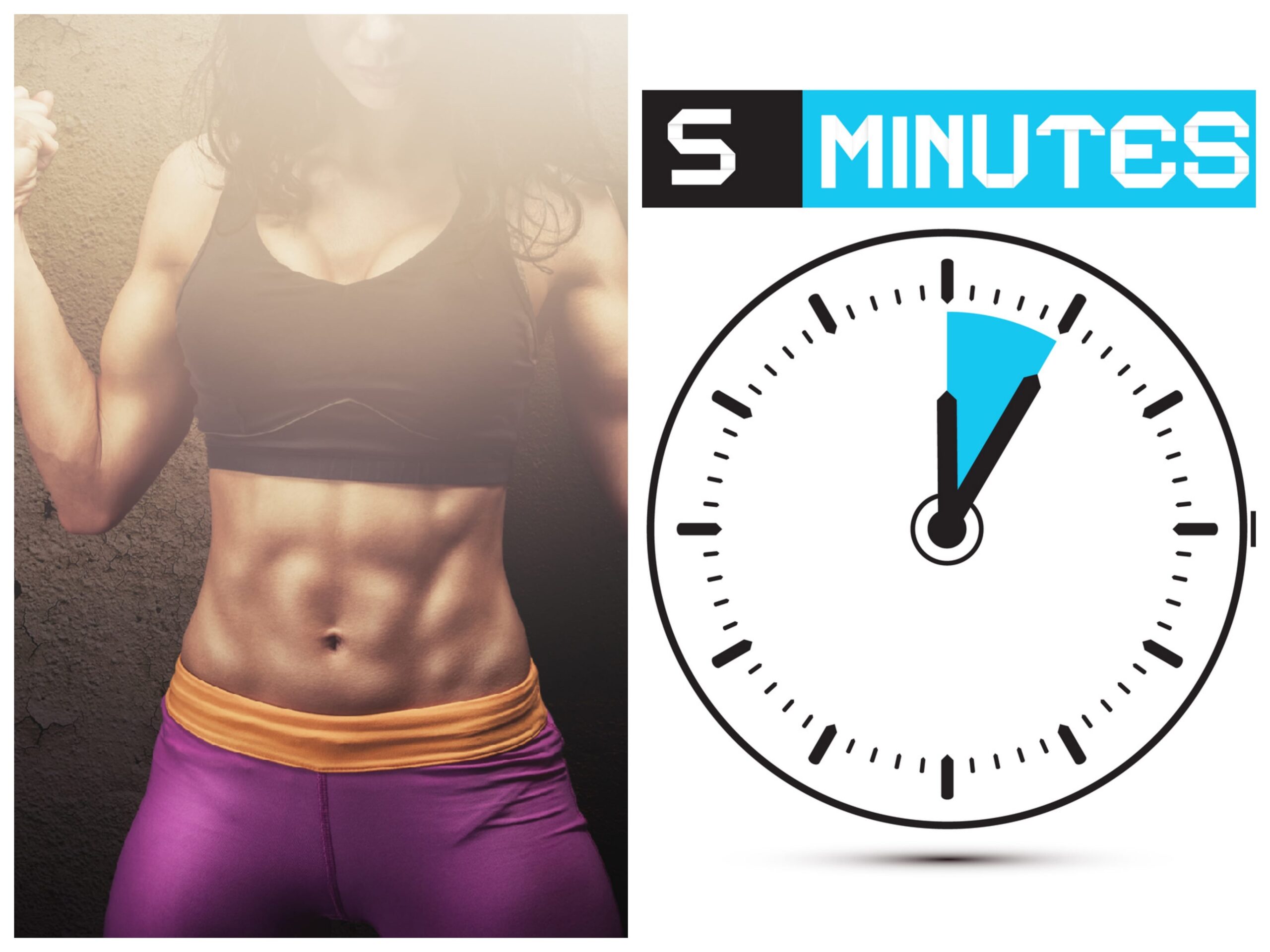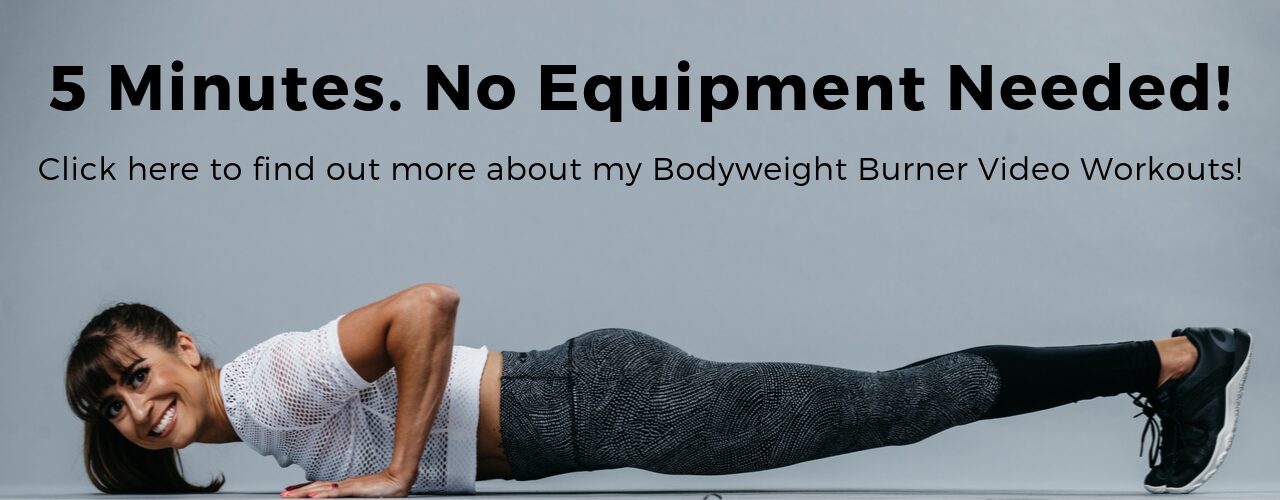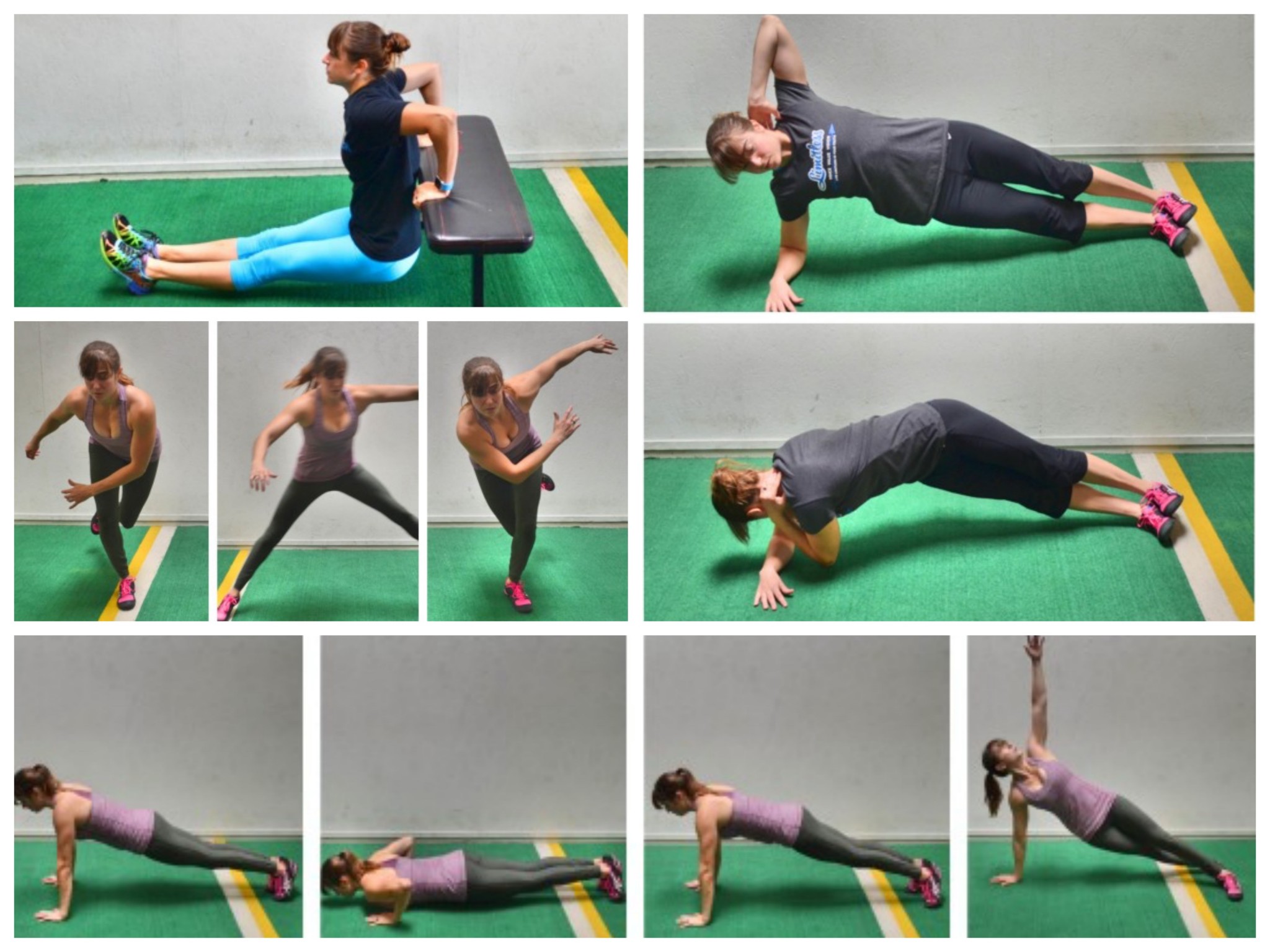
Do 15 Min Workouts Work? (6 Tips To Get Results!)
“I don’t have enough time.”
This is one of the most common excuses I hear as to why people believe they can’t achieve results.
They believe a lack of time is why they can’t stay consistent with their training.
But there is always a way to design for the time we have to do SOMETHING and help ourselves move forward.
That’s why I wanted to share 6 tips to create more efficient workouts to lose fat and build lean muscle so that you don’t have to spend an hour in the gym!
And bonus, at the end I’ll show you how to put these tips together in a 15 minute full-body session!

Tip #1: Use Intervals And Timed Circuits
When we’re short on time, part of the struggle is even getting started.
We think “I only have 15 minutes” and because we either can’t complete the session we had planned or just feel stressed trying to make sure we are done, we skip our workout.
We don’t do anything.
That’s why designing backup workouts for the time you have is so key.
And more importantly designing workouts that are timed to FIT what you need helps you not rush through the session.
For efficient, fast workouts, use interval workout designs or timed circuits even if you’re focusing on building strength.
Instead of 8-12 reps for 3 sets, think 1 minute intervals of work for 3 rounds.
Or a 5 minute circuit where you do as many rounds of squats, push ups and sit ups as you can.
By using timed rounds of work, you can focus on what you feel working to be more intentional with your exercises and create that training density to see better results while spending less time working out.
Training density is the amount of work or reps you complete in a set amount of time.
When you have that interval or timed circuit, you can focus on doing more reps each week in the same timeframe over feeling like you have to work out longer to do more reps!
And because you know your workout is exactly the length you need, you won’t be tempted to rush through the reps and sets listed to just get it done.
This can help you make sure you’re getting the best quality training session possible.
So instead of just listing out reps and sets to complete, make sure everything you include has a specific time frame to guarantee it will fit your busy schedule and allow you to focus on quality movements over being stressed and just rushing through the moves!
Tip #2: Pick One.
Something is better than nothing.
I know this can be hard to accept when we want to do the ideal, but one little change, one single action can add up when done repeatedly over the weeks and months.
While I of course would love to make sure everyone is doing extra prehab work every day, even just adding in 1 foam rolling, 1 stretching and 1 activation movement is better than nothing.
Especially since so often we want to skip our warm up when we are short on time.
Instead of focusing on the ideal, think about the minimum you can do to still be consistent with things.
Then set a timer for even just 30 seconds per move or per side for a quick under 3 minute warm up to maximize your time training!
Those 3 minutes may not seem like much, but over the week that adds up to 21 minutes and even 90 minutes per month!
And that mobility work can keep us training hard during our quick sessions while making sure we are getting the most out of every movement!
Tip #3: Force Yourself To Fail.
While we always want to challenge ourselves with our training to achieve the best results as fast as possible, when you’re short on time, you want to see how you can create that challenge in less time.
This means choosing moves that max you out faster.
Use variations of moves where you can only do 5 reps in a row. Pick weights or tempos or ranges of motion that make even just a couple of reps challenging.
You can then build up volume through those time circuits, cycling through the areas you are working.
By moving from exercise to exercise, even when you can only do a few reps, you will let that volume accumulate over the rounds.
What may only be 2 reps in a row of an airborne lunge can end up being 16 reps in total when the circuit is done.
You’ll create that stimulus to build lean muscle by selecting a move that was challenging and pushed you to failure in the time you had!
Tip #4: Don’t Work The Same Muscle Back To Back
We need rest to keep working at a true 100% intensity.
But when we are short on time, we don’t want to spend any of that time NOT doing work even when we know it is beneficial.
That’s why circuits are great to use, especially if you design them to cycle through exercises that work different areas.
This way one muscle is resting while another is working.
So instead of working the same muscle group back to back, like including two quad intensive moves like squats and front lunges, cycle through moves that alternate areas worked like doing a single leg deadlift followed by a back row.
You’ll get to keep moving while resting and end up creating a great volume of work while targeting more areas during your short time to train.
And if you do find you need a “recovery” move, including more focused core work can help you bring your heart rate down while still getting in some work for another area!
By keeping your workouts more full body, you’ll also be able to increase your training frequency for areas over the week to help see better muscle growth even with short training sessions!
Tip #5: Use Moves That Target MULTIPLE Muscle Groups At Once
You want moves that target those big muscle groups and work more muscles at once so you can burn more calories and really challenge your entire body with short sessions.
While isolation moves can make muscles feel fatigued, they aren’t going to be as efficient when we are short on time.
So instead of a tricep extension, focus on close grip push ups which will be tricep intensive but also work your chest and shoulders.
Even use some hybrid movements like the climber push up that may be more core and arm intensive while still working your chest, shoulders and triceps with the push up.
But don’t waste time using moves that isolate one muscle group at a time unless you’re using them as active rest.
Get as many muscles worked in these short sessions as possible pairing compound moves for different areas back to back whether you use intervals or timed circuits.
Tip #6: Focus On Full-Body Workouts
Because your workouts are short and you’re not getting in a ton of volume for muscle groups each workout, you want to increase your training frequency for areas over the week by making each workout more full body.
This allows you to create better muscle growth by still getting in the work you need over the week even if it is more spread over multiple days.
When you design your workouts, focus on cycling through compound moves that target each area – consider a leg and glute exercise like backward lunges, a chest, shoulders and triceps move like bench press and a back exercise like rows to hit major muscle groups efficiently.
Then cycle the variations of moves you use for those areas over the week instead of repeating the same exercises over and over again.
Use a squat or deadlift instead of lunges on other days. Try an overhead press or even a standing cable chest press instead of the basic bench. Do pull ups or a barbell row over dumbbells.
But vary the way you target muscles over the week as the same but different can help you create overload and progression!
Putting it all together…
Here’s a quick full body bodyweight series using intervals. It’s just 15-minutes and because you know exactly how long it is, you don’t need to feel rushed!
Even if you’d usually go to the gym for an hour, it is never bad to have back up short workouts on hand for those busy days to help yourself stay consistent and in the habit.
We have to remember that the more we do, the more we do so doing SOMETHING keeps the momentum going in the right direction!
15 Minute Full-Body Bodyweight Blast
Warm Up:
30 seconds per side TFL Foam Rolling
30 seconds per side World’s Greatest Stretch
30 seconds Thoracic Bridge with Sit Thru
Workout:
Complete 2 rounds through the circuit below without resting.
CIRCUIT:
1 minute per side Side To Curtsy Lunge
1 minute Doorway Row
1 minute Toe Touch Push Up
1 minute Bridge to Sit Up
Cool Down:
30 seconds per side Star Stretch with Quad Stretch
30 seconds per side Upper Back Foam Rolling
Want more amazing workouts at your fingertips whenever you need?
Check out my Dynamic Strength Program!





